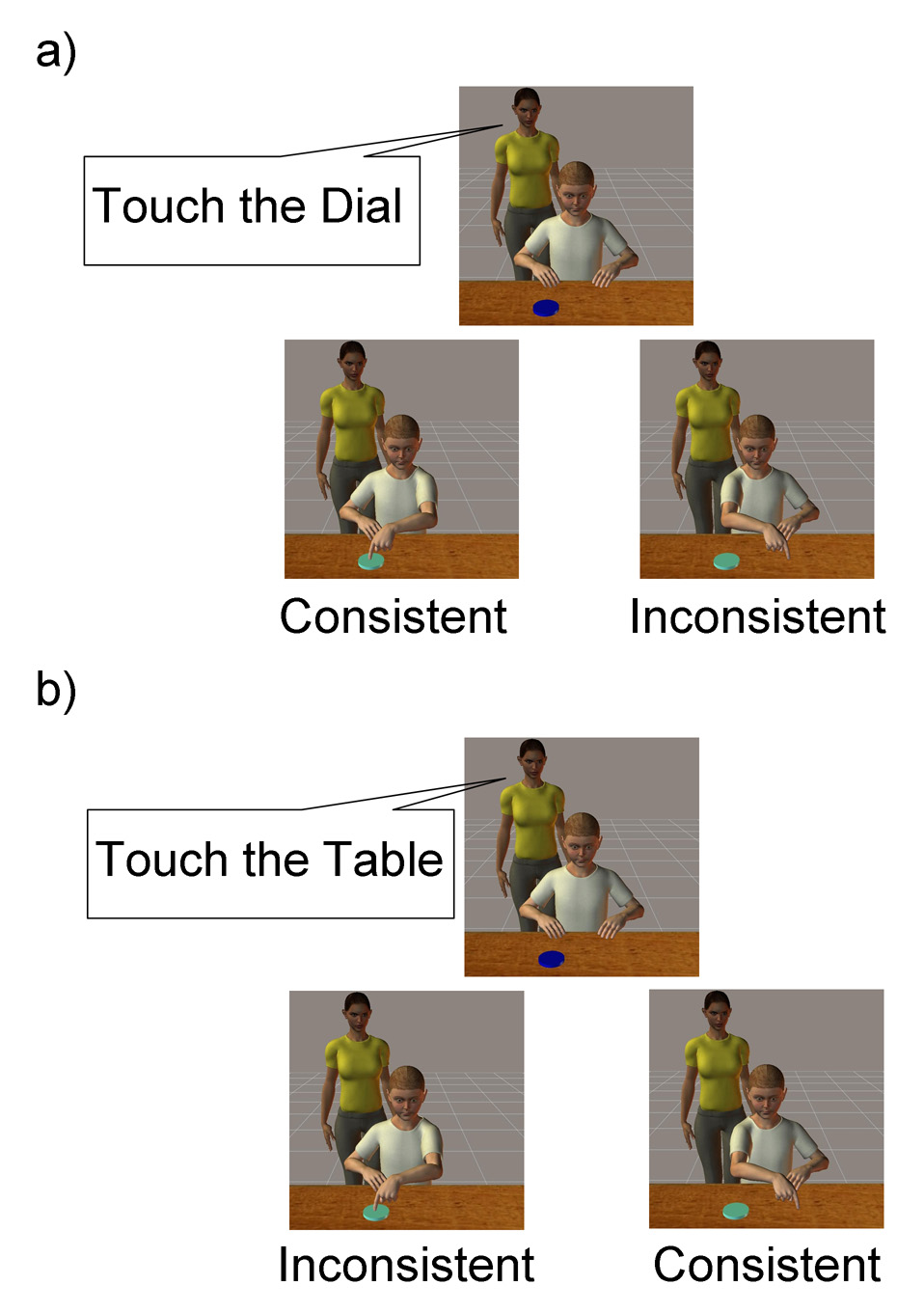Figure 1.
Experimental stimuli. Each animation began with a dial blinking on one end of a table (1 s). An adult standing behind a child then verbally instructed the child (1.5 s) to touch either (a) the blinking dial or to (b) a different part of the table upon which the dial was placed. The adult’s mouth movements were synchronized with a recording of an adult female voice to increase the realism of the animation. Following the adult’s instruction, the child touched moved one of his arms to touch either the dial or the table with equal probability and then moved his arm back to the initial starting position (2 s), after which the child remained in that position briefly (0.5 s) before the ITI began. The child followed instructions in 50% of trials and did not follow instructions in the other 50%.

